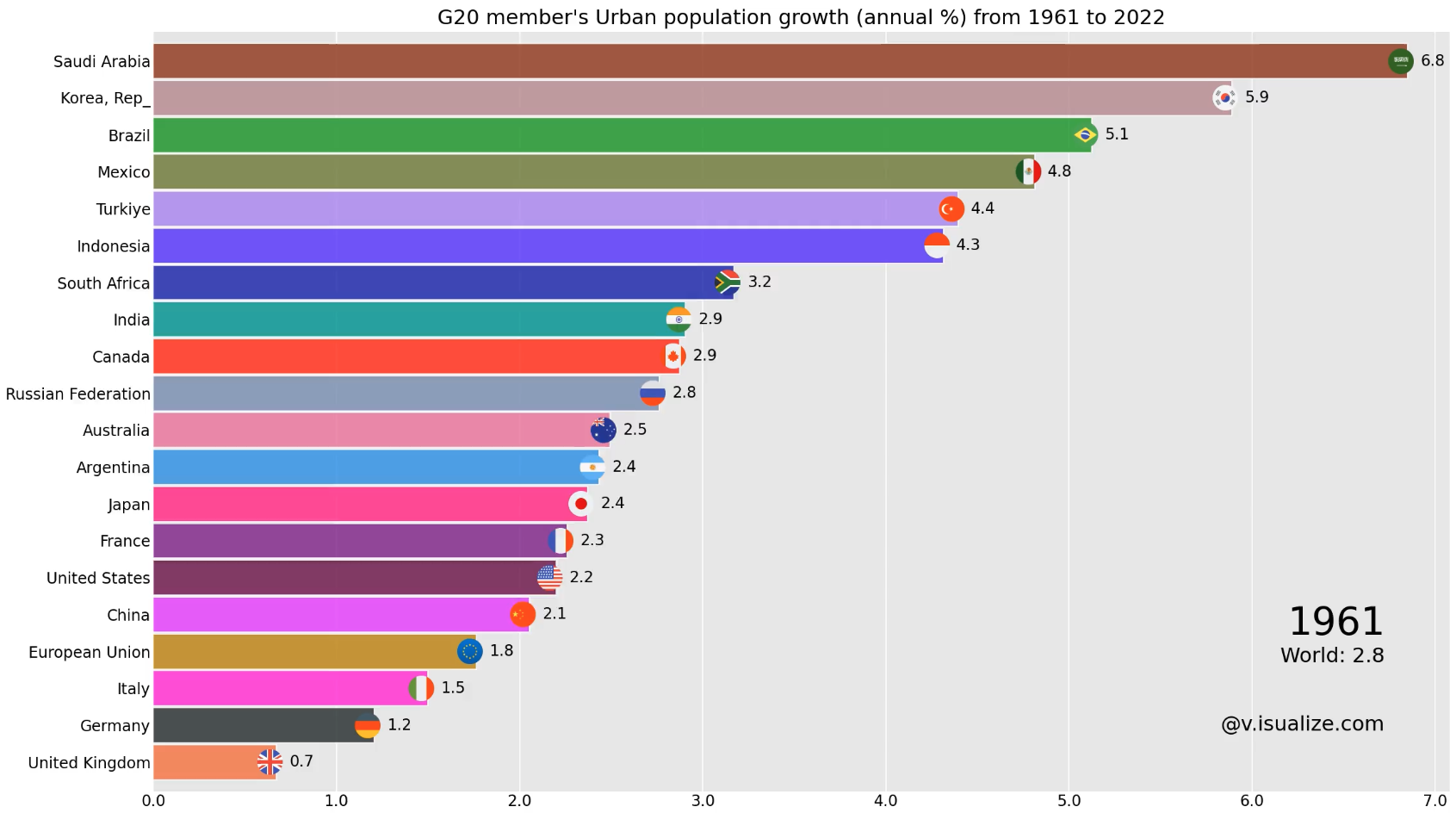Urban population refers to people living in urban areas as defined by national statistical offices. It is calculated using World Bank population estimates and urban ratios from the United Nations World Urbanization Prospects. (World Bank)
- The collapse of the Soviet Union was a significant factor in the decline of Russia’s urban population between 1992 and 2007. The transition to a market economy, industrial decline, economic hardship, increased mortality, declining birth rates, emigration, and changes in internal migration patterns all contributed to this trend. The collapse led to profound economic and social disruptions that heavily impacted urban areas, resulting in a notable decrease in their populations.
- The decrease in Japan’s urban population between 2011 and 2012 was primarily due to the immediate and long-term effects of the Great East Japan Earthquake, the subsequent tsunami, and the Fukushima nuclear disaster. These events caused significant destruction, displacement, and economic disruption in urban areas, leading to a notable decline in the urban population during this period.
- The low urban population growth rates in European countries throughout the period from 1961 to 2022 are a result of mature urbanization, demographic trends such as low birth rates and an aging population, limited rural-urban migration, economic stability and development, effective urban planning, and historical factors like post-war reconstruction. These elements combined to create a stable but slow-growing urban population compared to regions undergoing rapid urbanization and development.
Source: THE WORLD BANK, G20



Comments